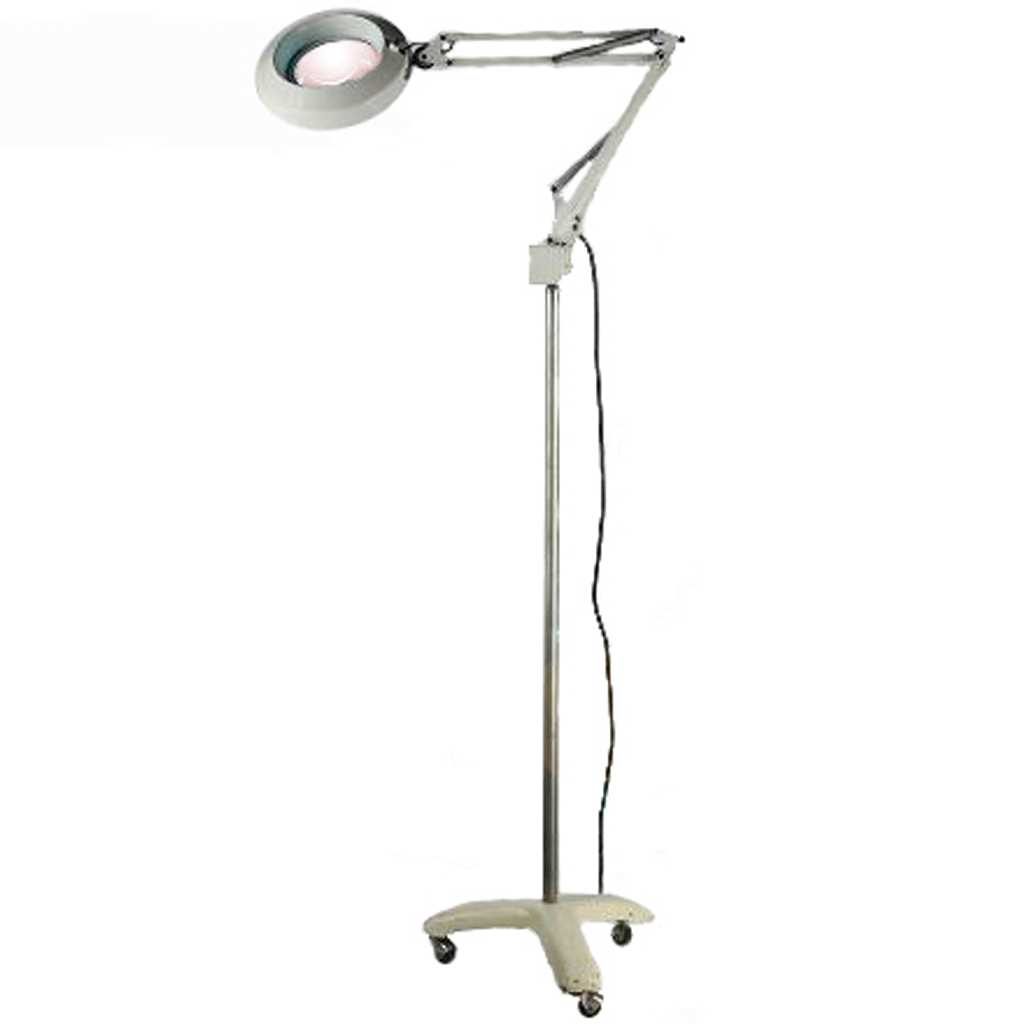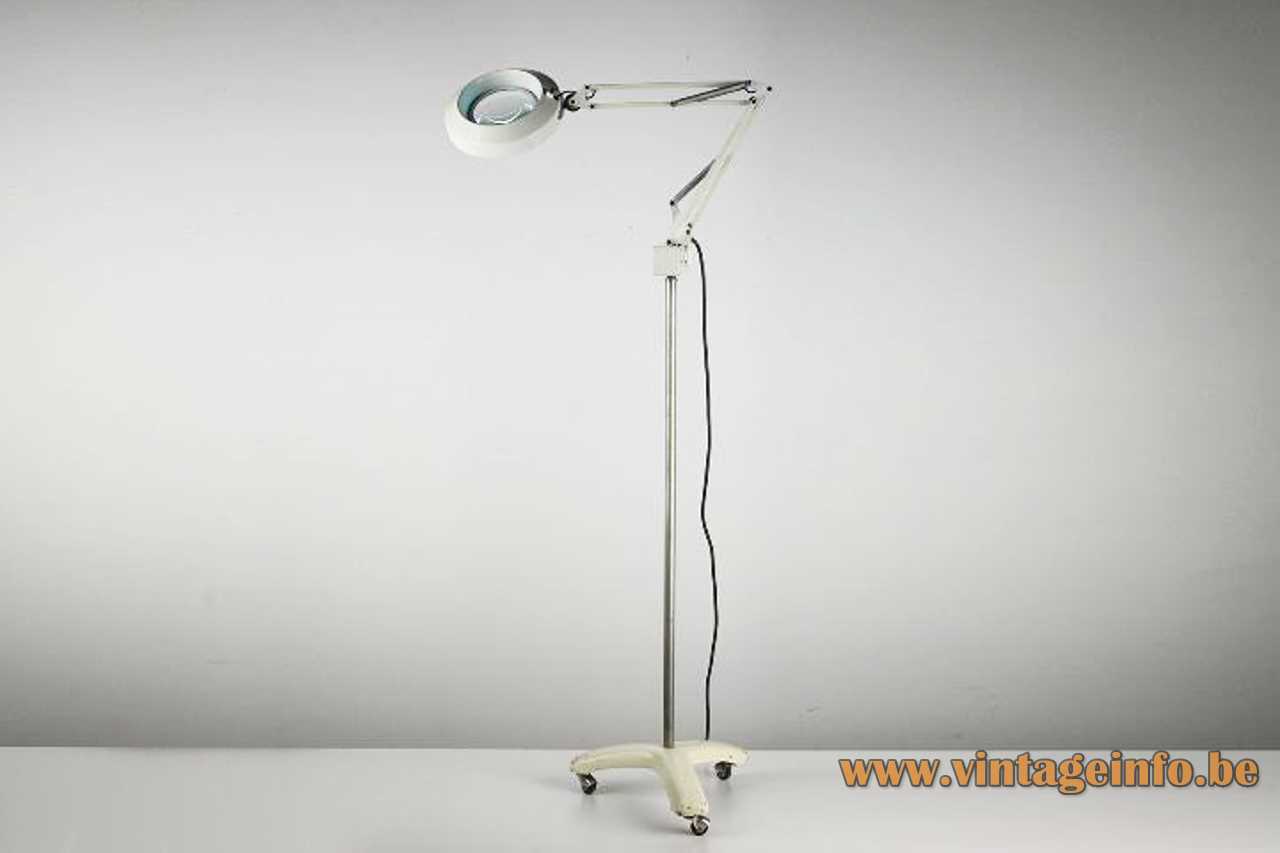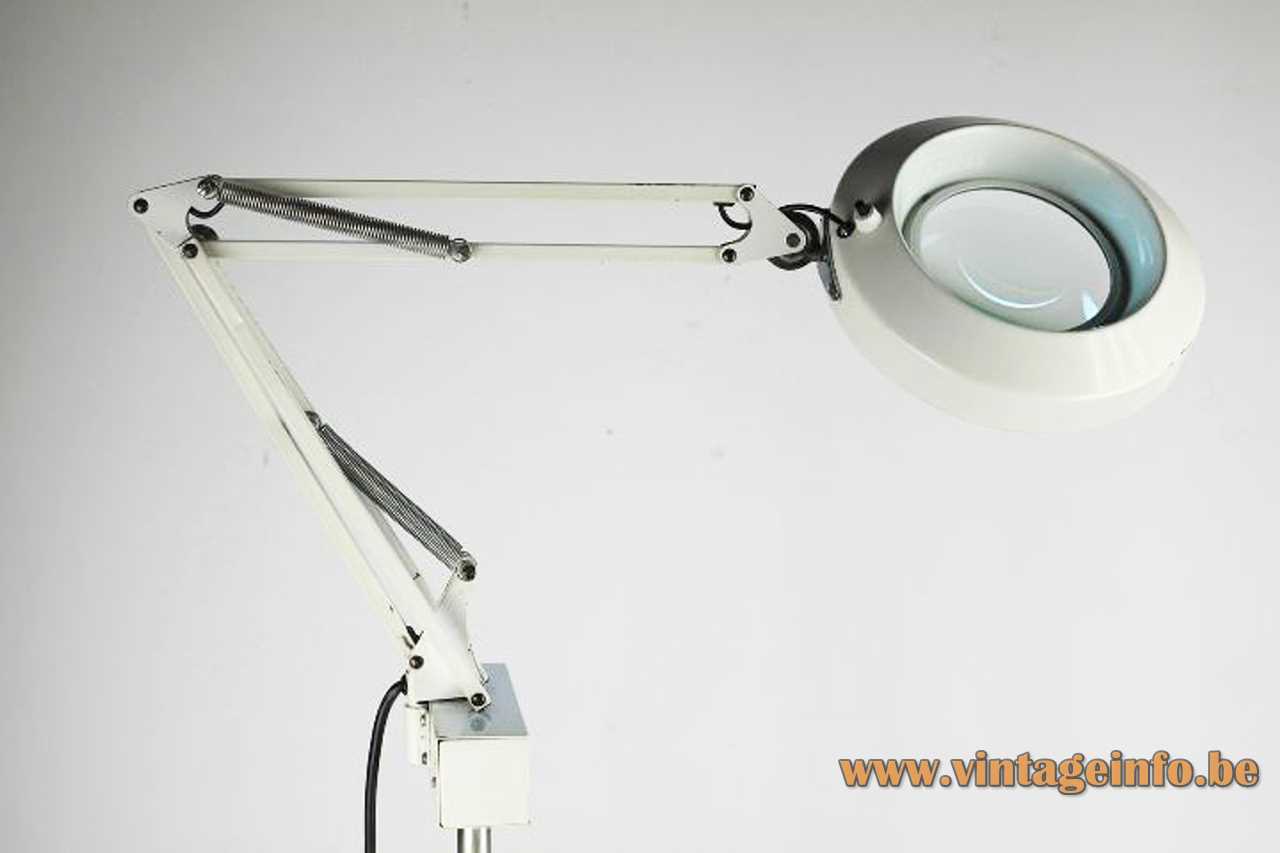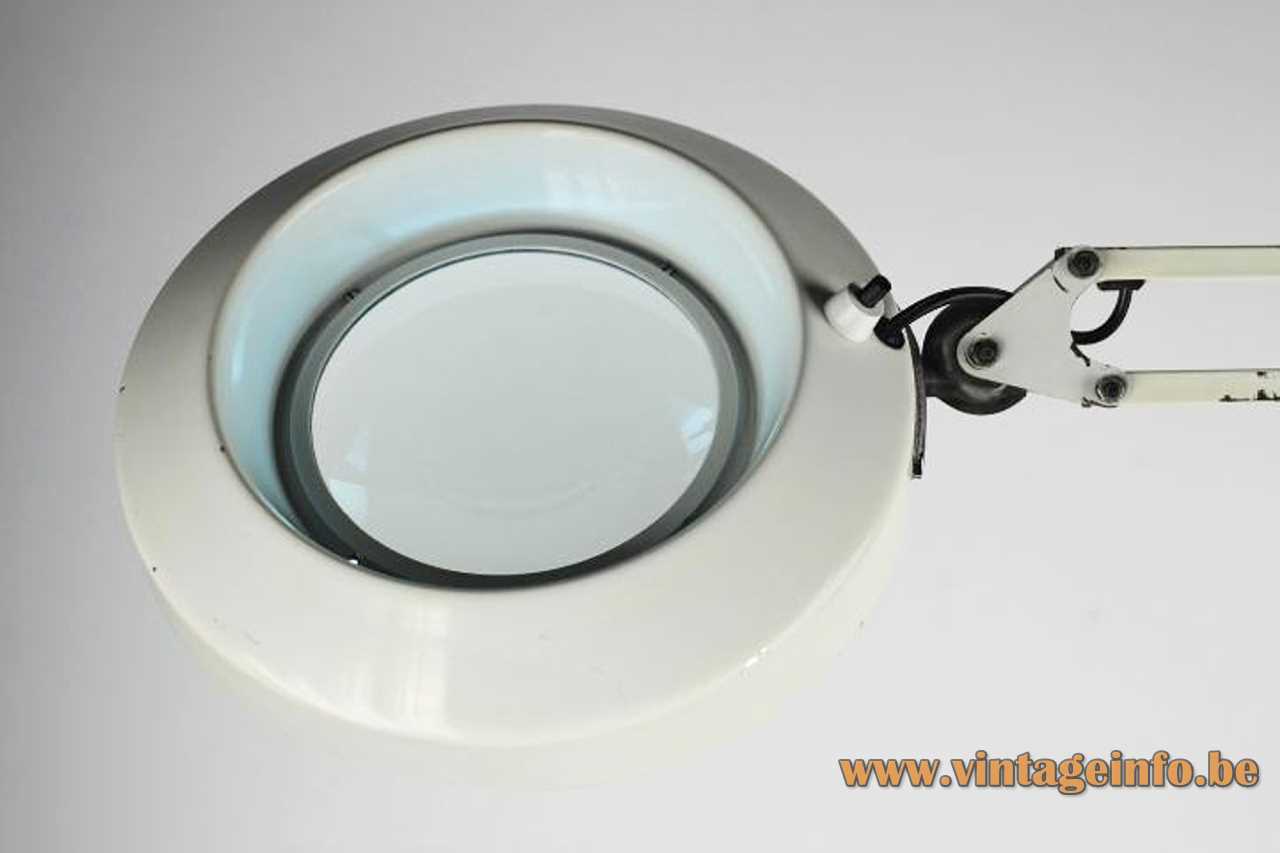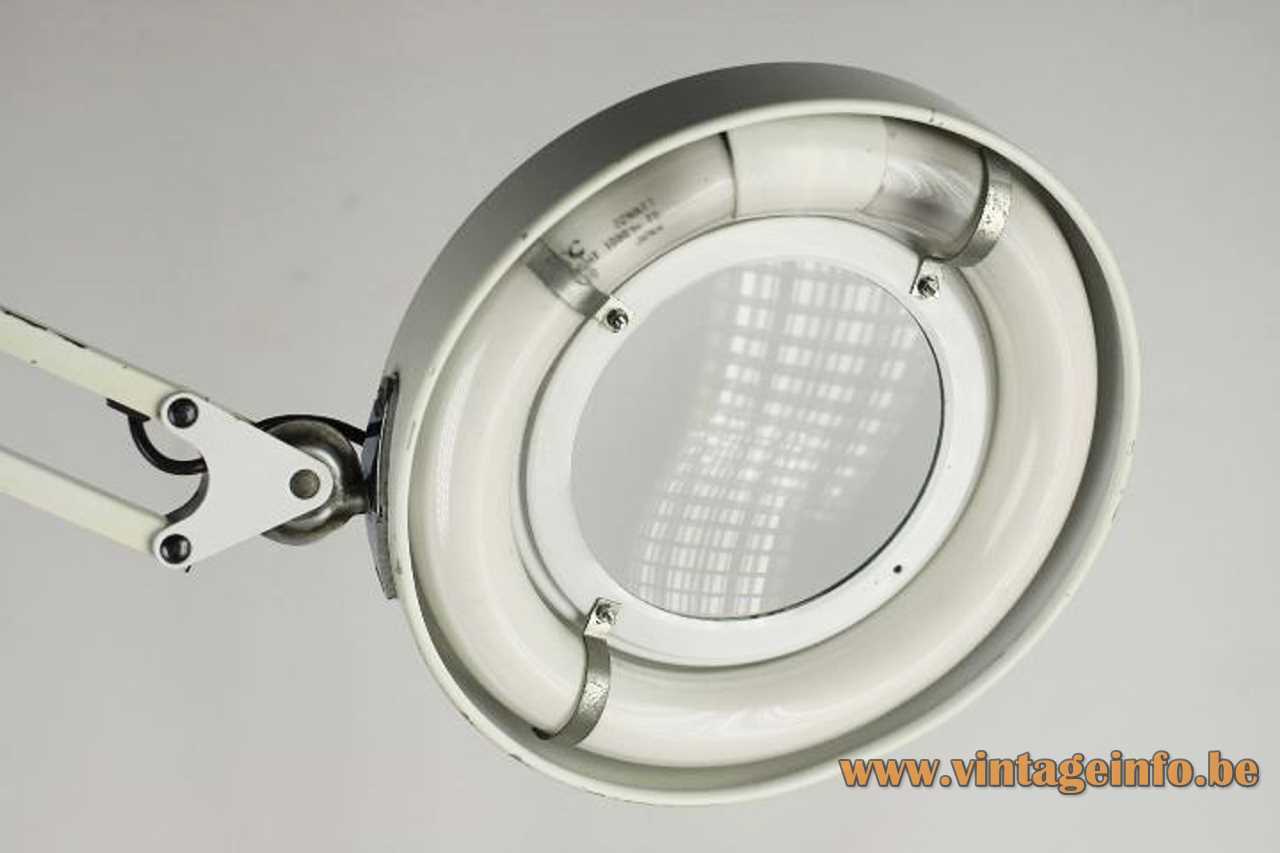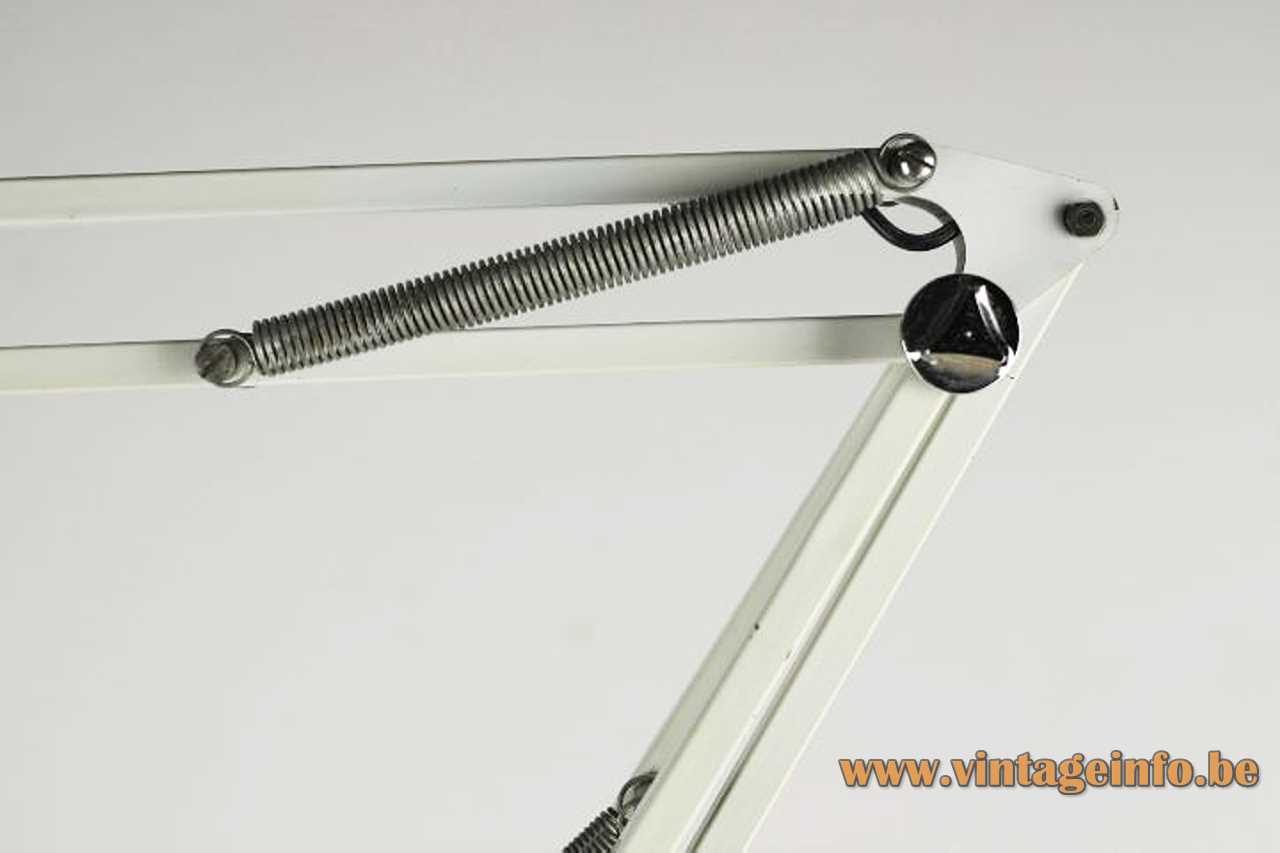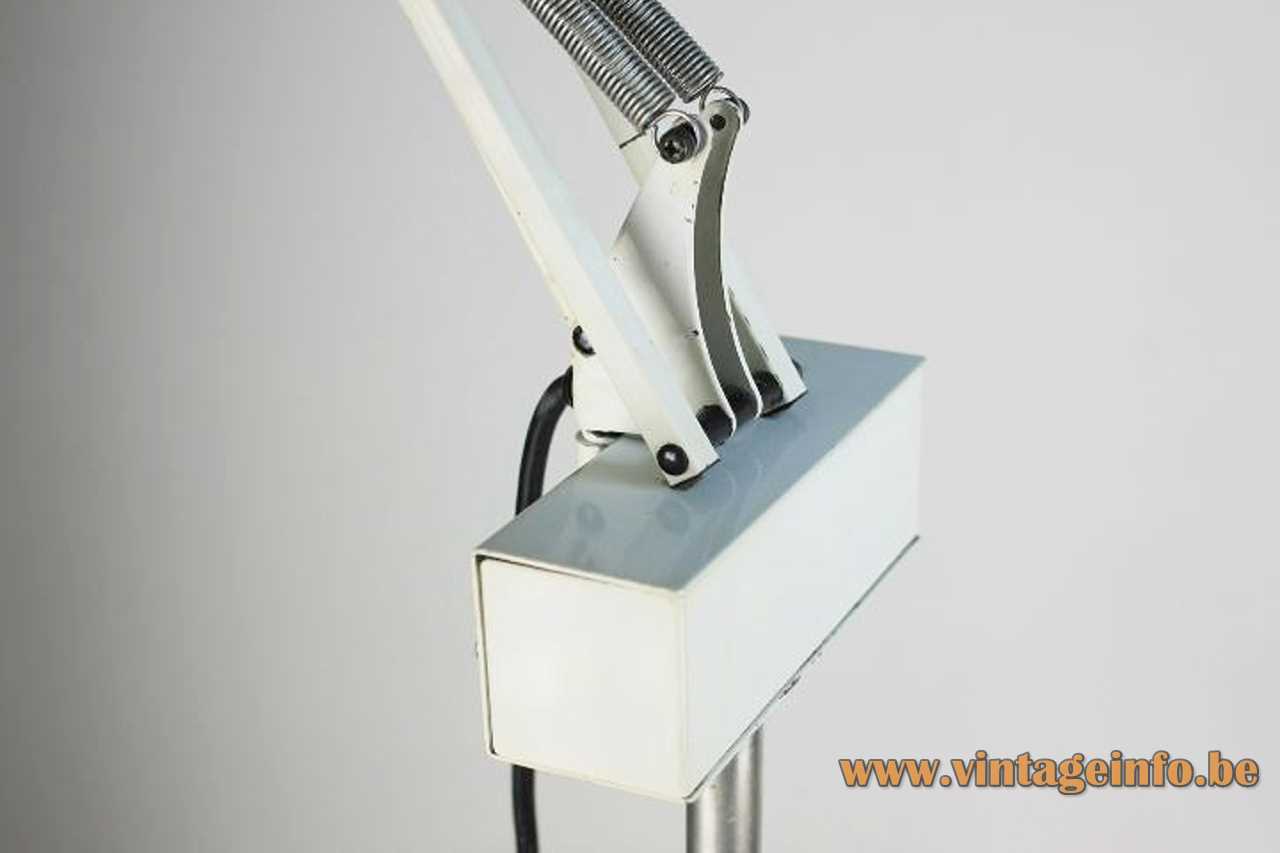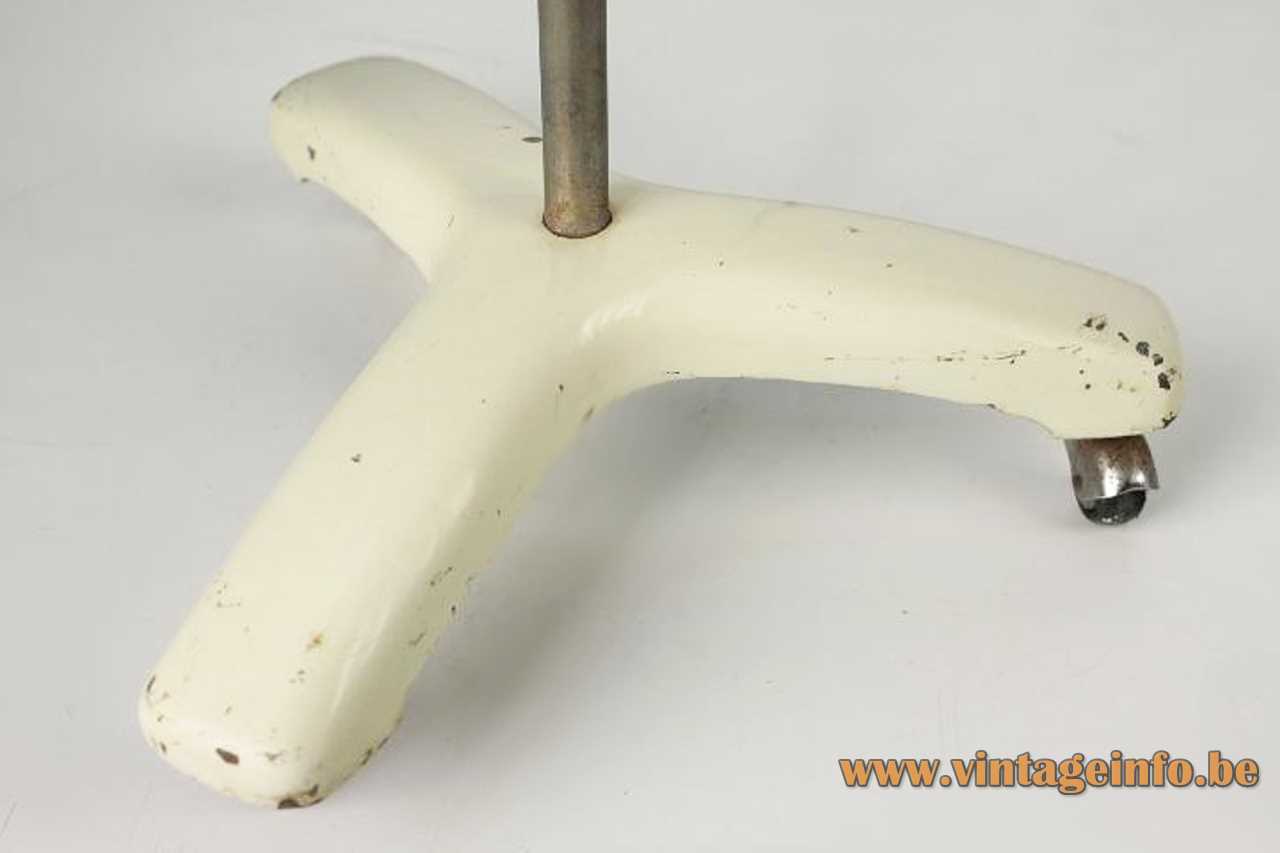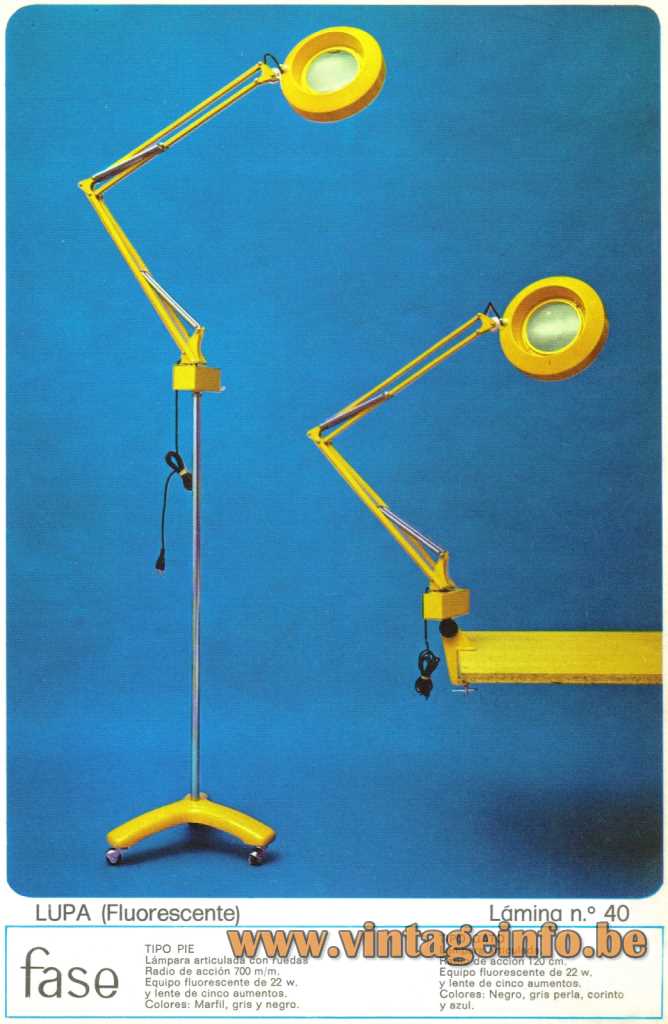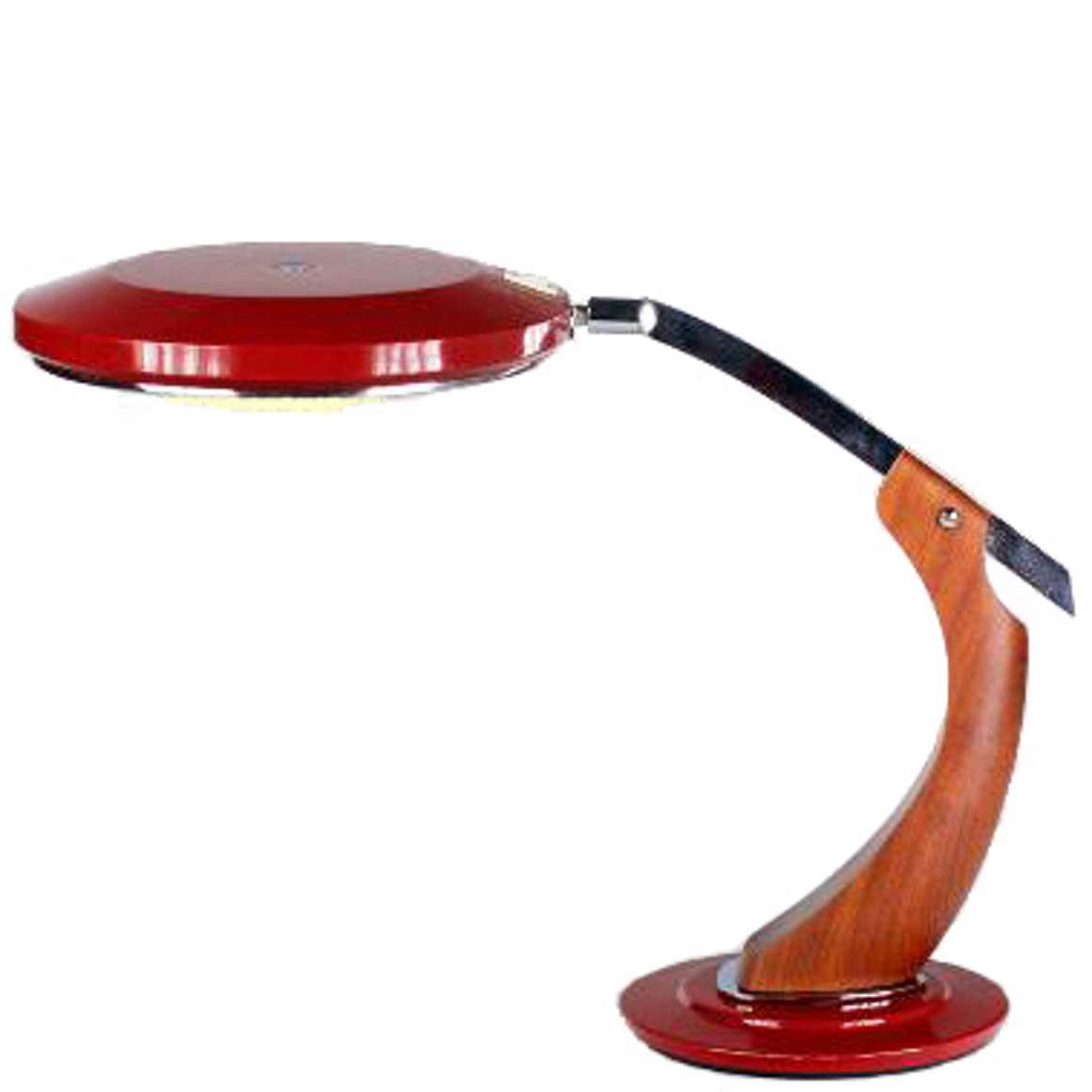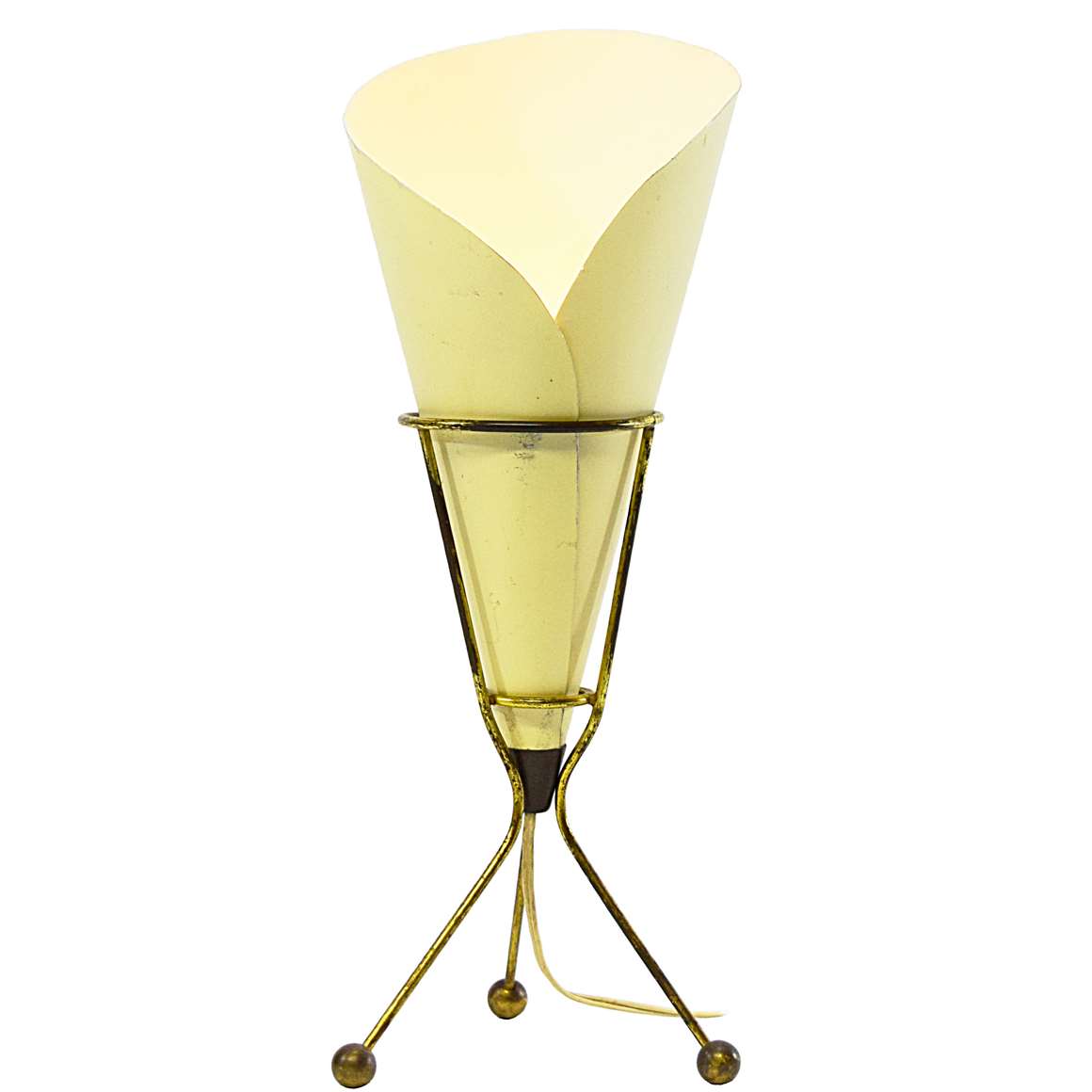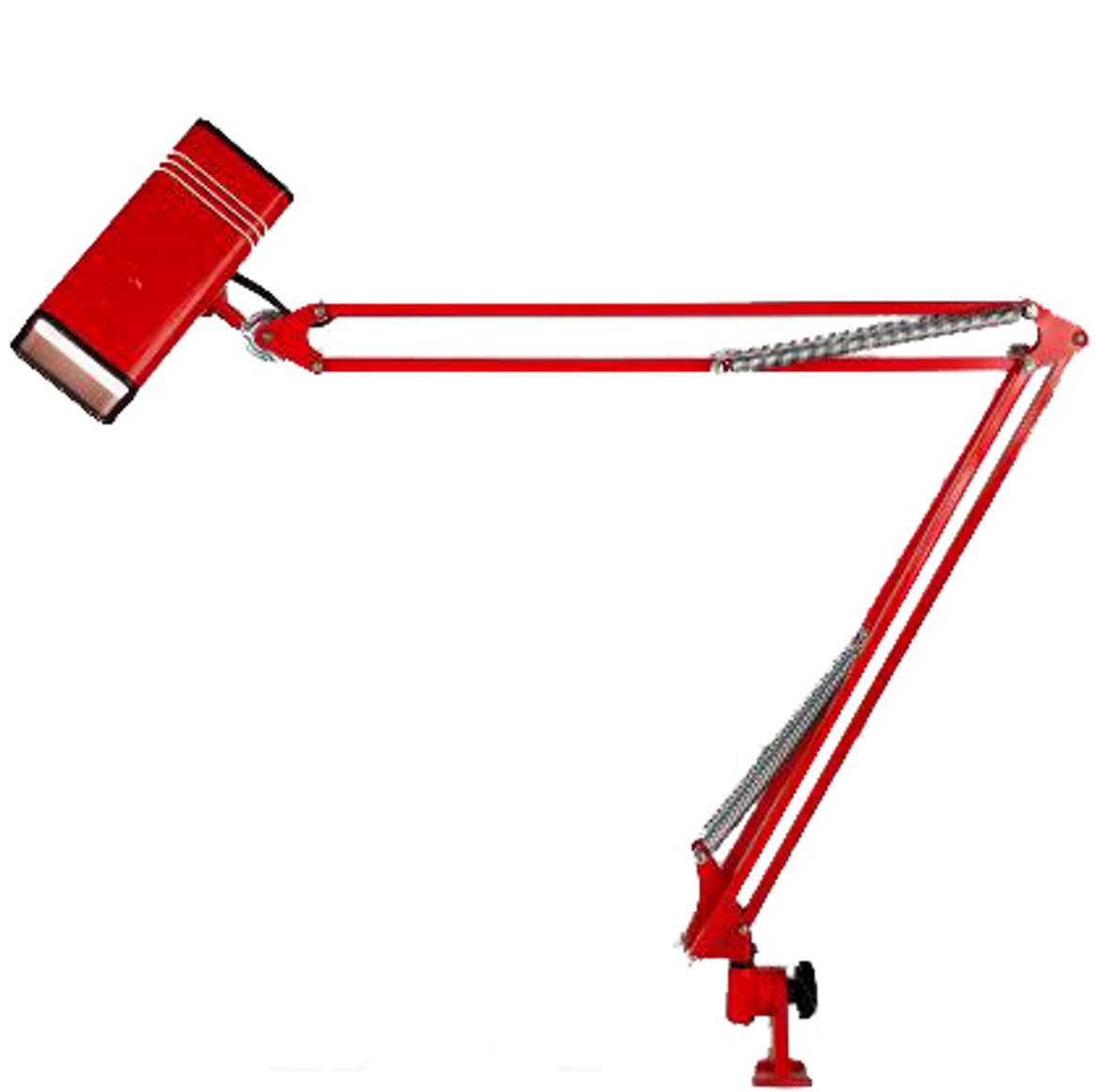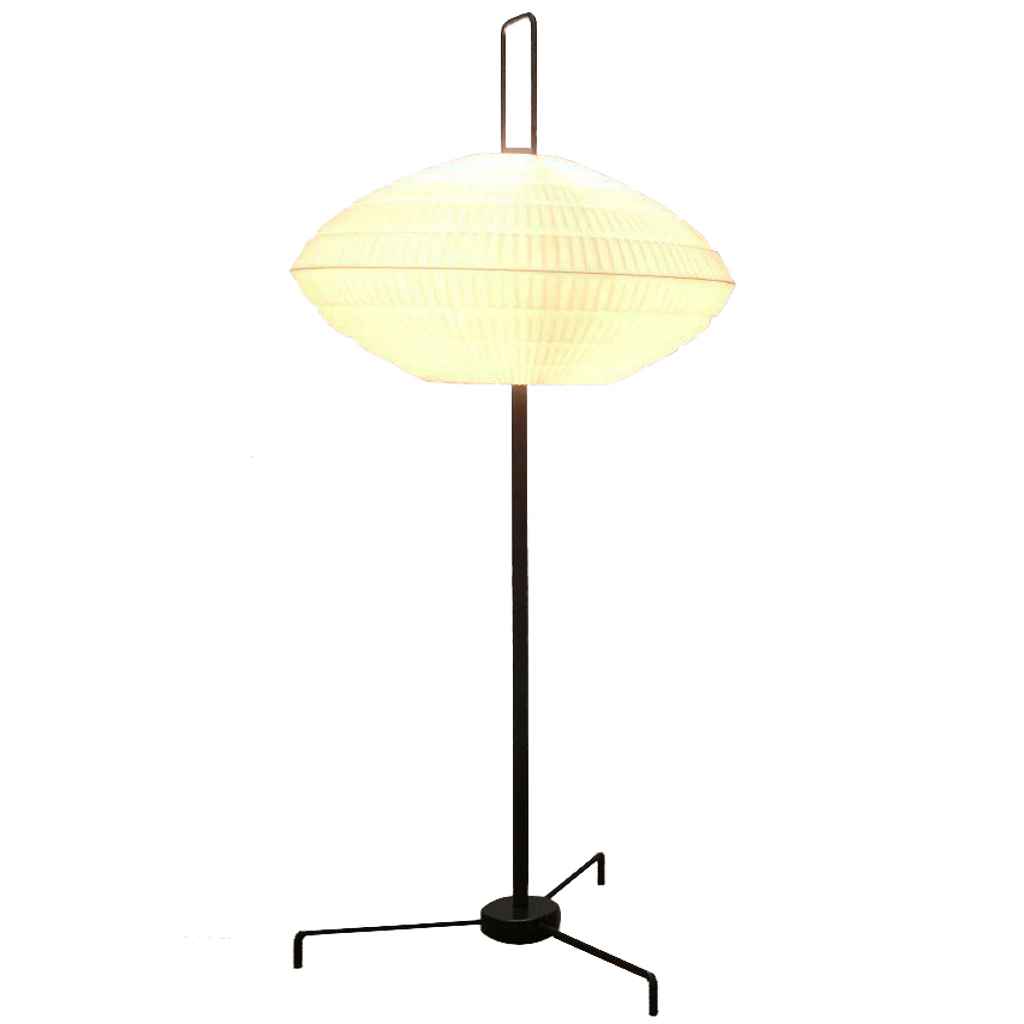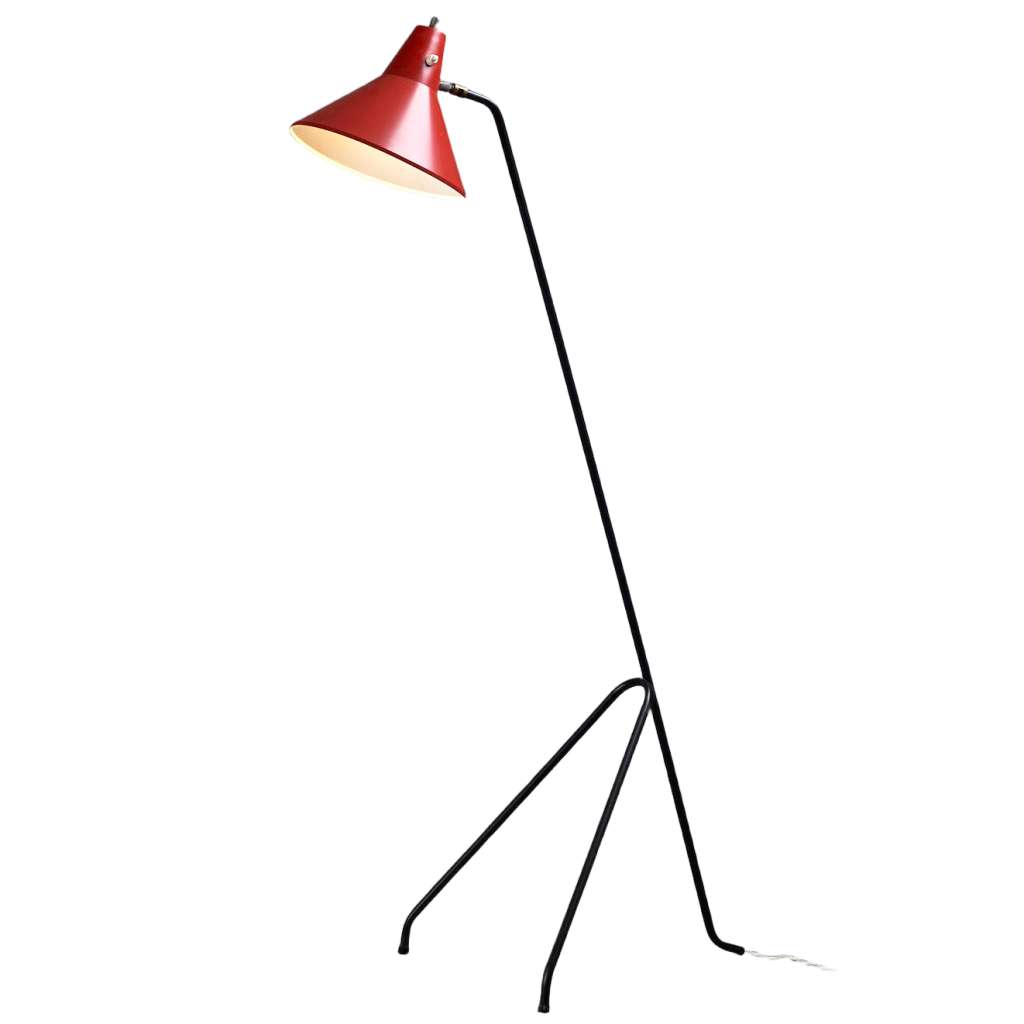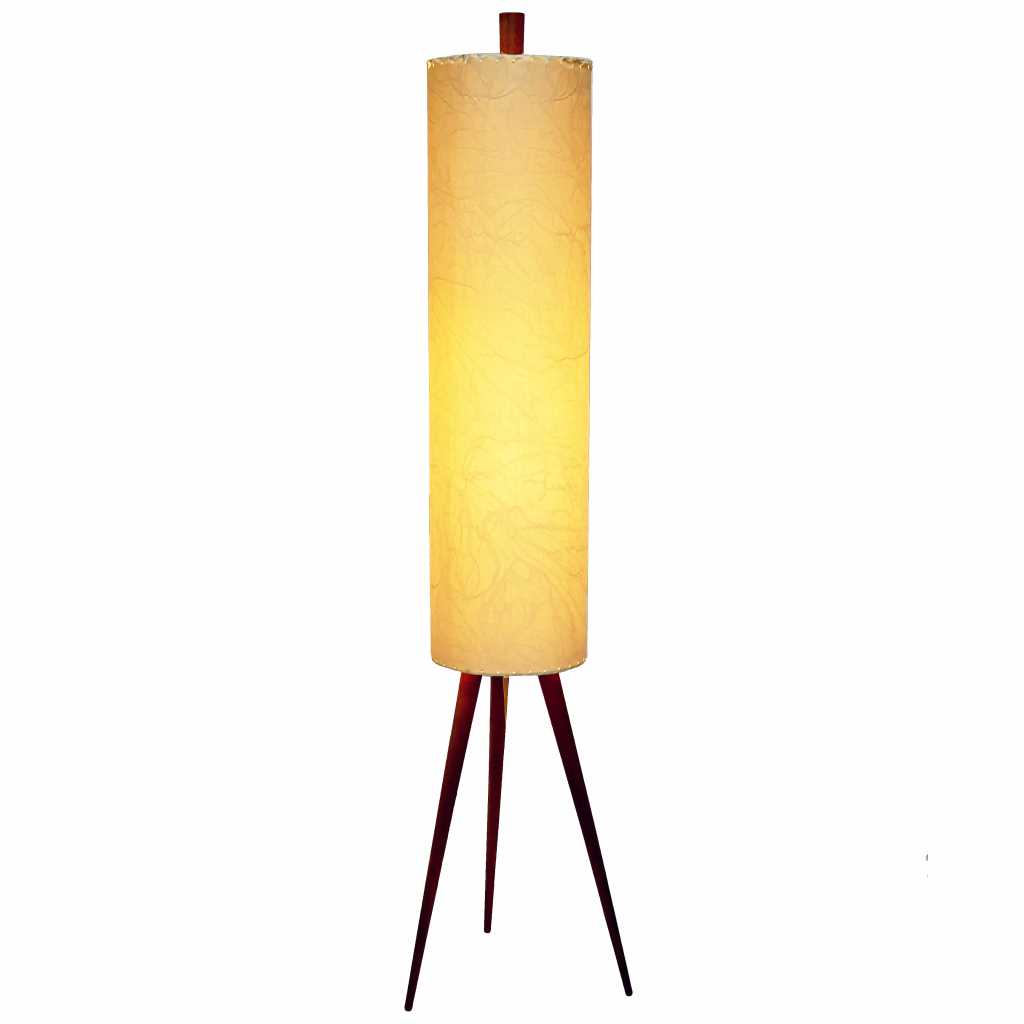Fase Lupa floor lamp in the 1974 catalogue
Links (external links open in a new window)
Many thanks to Lluís from Eclectique Vintage for the photos.
Fase Lupa Floor Lamp
Materials: White painted metal (iron) tripod base with 3 wheels and chrome caps. Long chromed metal rod (iron). Some metal parts. 4 architect lamp style adjustable square rods. 4 chrome springs. Several small metal and chrome parts. Round white painted aluminium lampshade, white painted on the inside. Porcelain socket. Ballast inside the white beam on top of the chrome rod. Round magnifying glass.
Max Height: 170 cm / 66.92”
Lampshade: ∅ 23 cm / 9.05”
Base: ∅ 38 cm / 14.96”
Electricity: 1 circular fluorescent tube 22 watt, 220 volt.
Period: 1970s – Mid-Century Modern.
Designer: To be appraised.
Manufacturer: Fase, Torrejón de Ardoz, Madrid, Spain.
Other versions: The Fase Lupa floor lamp exists in several colours. Also a clamp lamp exists. The base was also used for another lamp, the Fase 67 Pie, you can find it over here.
Fase
The Fase company was founded by self-made man Pedro García Martin and designer Luis Pérez de la Oliva.
The Boomerang 64 lamp was one of their first designs in 1964, you find it over here on Vintageinfo. Initially they sold their self-produced lamps to the markets in and around the capital Madrid before successfully opening a factory in Torrejón de Ardoz on the outskirts of the city.
They produced mainly lamps, but also ashtrays and other products such as office bins and coat racks.
Fase supplied many lamps to the offices of General Franco ‘s dictatorial government and the Guardia Civil, some sort of military police. From 1975 on, after the death of Franco and the end of the regime, Fase started with Italian Modern and Bauhaus -inspired designs. The Spaniards were unfamiliar with this design because of the Franco regime that ruled the country with an iron fist and allowed few foreign influences.
During the 70s Fase exported lamps to Belgium, The Netherlands, Luxembourg, Great Britain, Norway, France, Italy, Germany, Portugal, United Arab Emirates, Japan, Hong Kong, Morocco, the United States and Canada. In total in more than 32 countries.
The 1980s
In the 1980s Fase jumped on the bandwagon of the halogen lighting. The break with tradition proved unsuccessful and ultimately contributed to the end of the business. A large fine of the Treasury in the early nineties for tax irregularities was the end for Fase. The company was officially dissolved in 1996.
Drowned, the company sold its manufacturing license to a German brand, Ma-Of, which slightly modified the original design by adding more chrome. Before these final death rattles, the partners had already separated. GEI (Gabinete Estudios Industriales – Cabinet Industrial Studies) was another company that sold similar lamps. Also Massive from Belgium produced a few lamps in this style.
When the company stopped producing them abruptly, there was a lot of ‘stock’ available in the warehouses. That’s why you find relatively many lamps with a label attached. Many lamps are sold new and never used in the box (NOS – New Old Stock).
Designers who have worked for the company include : Gabriel Teixidó. He designed the Iberia and Meca series and Tomás Díaz Magro, responsible for the Apolo, Minifase and Impala lamps. The most productive was Luis Pérez de la Oliva, who designed the majority of the Fase lamps.
Fase also sold lamps made by others such as the Yamada Shomei ‘Manon ’ table lamp from Japan. You can find it over here on Vintageinfo. The Prisma table lamp was produced in Italy by F.A.A.I. Arredo. Also the Sinus stacking ashtray made by Helit from Germany. A design by Walter Zeischegg from 1967. You can find it here in the MoMA, New York. Fase also sold lamps from other companies.
LUPELA
LUPELA was founded by LUis PErez L’Anzas (acronym of “lupela”). Luis had two sons: Fernando Perez de la Oliva, who later registered the LUPELA trademark, and Luis Pérez de la Oliva, who founded Fase, together with Pedro Martin. Fernando bought the production rights for 5 lamps by designer Jose Luis Gugel Sacha: the Reina, Cobra, Cisne and models 225 and 226. He agreed with his brother Luis that Fase would not produce articulated lamps. They did not keep to the agreement and Fase designed and produced many lamps inspired by LUPELA models.
